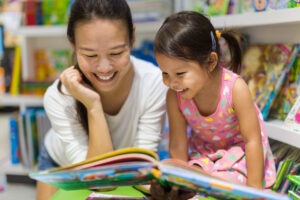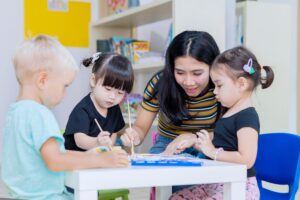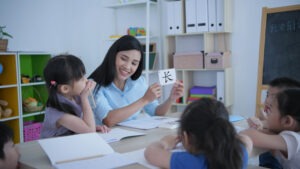BACK
The term “Kindergarten 2” is quickly becoming synonymous with “Primary One” these days. Often, children and parents ask how they will be getting ready for primary schools. Some of these questions are asked even during the beginning of the K2 year. It is easy to understand the anxiety and excitement of those moving on to primary education; it is a big leap. Children would need to demonstrate a higher level of independence and learning skills once they start Primary One. An effective transitioning process can help to ease the anxiety of both parents and children and better prepare them for what is to come.
A transition refers to a period of change between one “condition” to another. For the Kindergarten 2 children, they will be experiencing the transition from preschool to primary school during the year. This transition does not only focus on the learning but includes routines, social and emotional aspects. It is important to be mindful that every child responds to transitions differently. Some children may feel excited while others may be worried. Hence, it is crucial for parents and educators to work together to implement transitioning activities based on the child’s readiness and capabilities, and communicate frequently to support the child in this transition.
As an educator, I aim to create a fun and meaningful transition for children. Through games, children pick up and practice numeracy concepts like addition and subtraction, telling time and understanding schedules. Experiential learning activities are designed to provide opportunities for children to learn the concept of money in preparing them on purchasing food during recess.
In terms of social development, the transition programme prepares them for group work through small group practices in Kindergarten 2. The children are often given opportunities to participate in small group activities, encouraging them to engage in group discussions, work division and understanding the value of teamwork. While working in groups, I have seen how children are able to conduct simple online research on a topic of interest, create and take charge of game stalls for a school carnival and present wonderful shared responses from a brainstorming discussion. These experiences are all building blocks and equip children with a good start to formal learning.
In addition, the classroom layout is rearranged towards the end of the year to resemble a primary school setting. Each child is assigned their own seat during lessons and they would practice bringing their own pencil cases to school and learning how to be responsible for their own stationery. All of these transitioning experiences are concrete, allowing children to learn and familiarize themselves with the seemingly new routines by doing them. It is the educator’s role to ensure that these experiences are effectively integrated into the kindergarten curriculum and routines to ensure a seamless transition.
Transitions are part of the learning process and every child needs to go through many transitions in their growing-up years. Learning how to cope with transitions is an important skill. Besides planning for the transition to take place, an educator can support the child by helping the child to understand that it is natural to feel worried during transitions but what are the actions they can take to ease themselves through transitions. Transitioning to Primary One is just a beginning.



